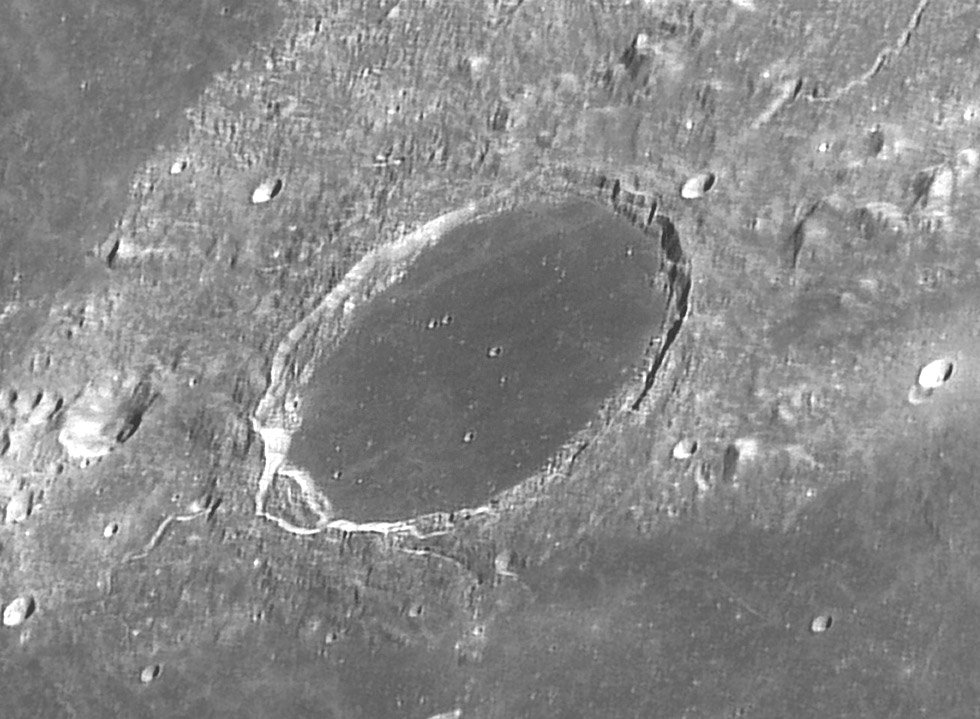
image by Paolo R. Lazzarotti and Tiziano Olivetti
This is the last of the spectacular lunar images that Paolo and Tiziano captured in Bangkok. It demonstrates that a low Sun isn’t necessary to capture multiple craterlets in Plato. In fact, the high lighting reveals the nimbuses of many tiny pits too small for their crater rims to be detected. Ho hum, another great image.
Technical Details:
10 April 2006, Gladio 315 Lazzarotti telescope (f/25), Lumenera Infinity 2-1M camera, Edmund Optics G filter IR blocked, 500 frames stack out of 2000.
Related Links:
Rükl plate 3
Paolo’s website
Yesterday's LPOD: Where Have All the Craters Gone?
Tomorrow's LPOD: Primaries or Secondaries?
COMMENTS?
Register, Log in, and join in the comments.



